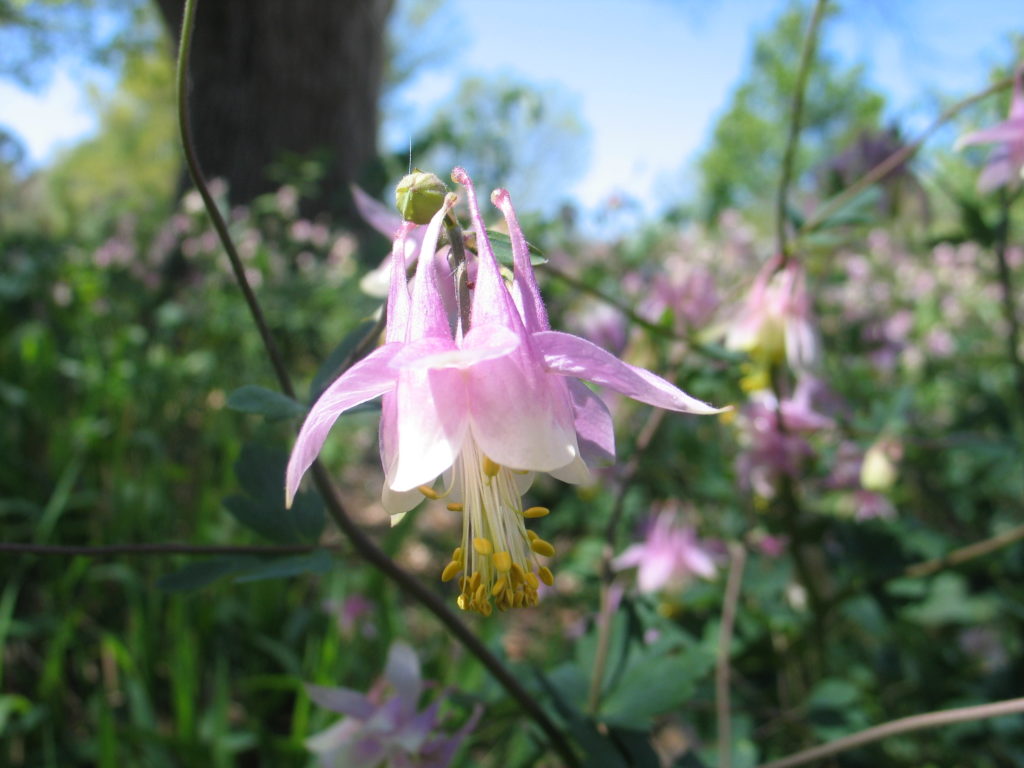
Gardening in the shade can be challenging. Plant textures, forms, and color differences become more important elements of the design.
- Texture has many aspects. Large-leaved plants have a coarse texture, while finely divided fern fronds create a fine texture. Strong contrasts in texture accentuate their differences. Use strong textural contrasts only where emphasis is needed.
- Pyramidal or upright, columnar plant forms serve best as accents in the shade. Rounded, weeping, or spreading forms create a more spacious effect and can be used more liberally in the design.
- Glossy leaves have more impact than dull or velvety ones. Variegated or yellow-green foliage is evident in the shade more than solid green or blue-green foliage. Light colors — white, cream, yellow and pastel pink — stand out in the shade. Deep reds, blues and purples may fade into the shade unless set off by a contrasting lighter color. To emphasize plantings in the shade, concentrate on plants with light-colored flowers or foliage.
Many native spring-blooming woodland plants and trees produce flowers early in the spring. They’re taking full advantage of the sunshine that hits the forest floor before trees have fully leafed out. After the trees develop their leaves and shade the ground, many of these plants set seed and fade into the background for the remainder of the season. Some will go dormant, disappearing entirely until the following year.
True perennial spring ephemerals are plants that have evolved to complete their entire season in the relatively short time frame of early spring, before deciduous tree leaf out.
The best way to create a woodland garden in your yard is by taking cues from nature. In nature, everything is layered with high- to mid-canopies, understory plantings and ground cover. Since plantings are not perfectly lined up in nature, they should not be planted in rows in your woodland garden.
Native plantings in a woodland garden design offer the advantage of lower maintenance. While new plants may require supplemental watering during the first year of establishment, the care of your woodland garden will be minimal, much like it is in a natural woodland setting.
Keeping the area mulched will help retain moisture and reduce weed growth. Organic or humus-rich mulch will also keep the soil well nourished, minimizing the need for fertilizer. The only other care your garden will need is occasional pruning of the shrubs and trees as necessary.
